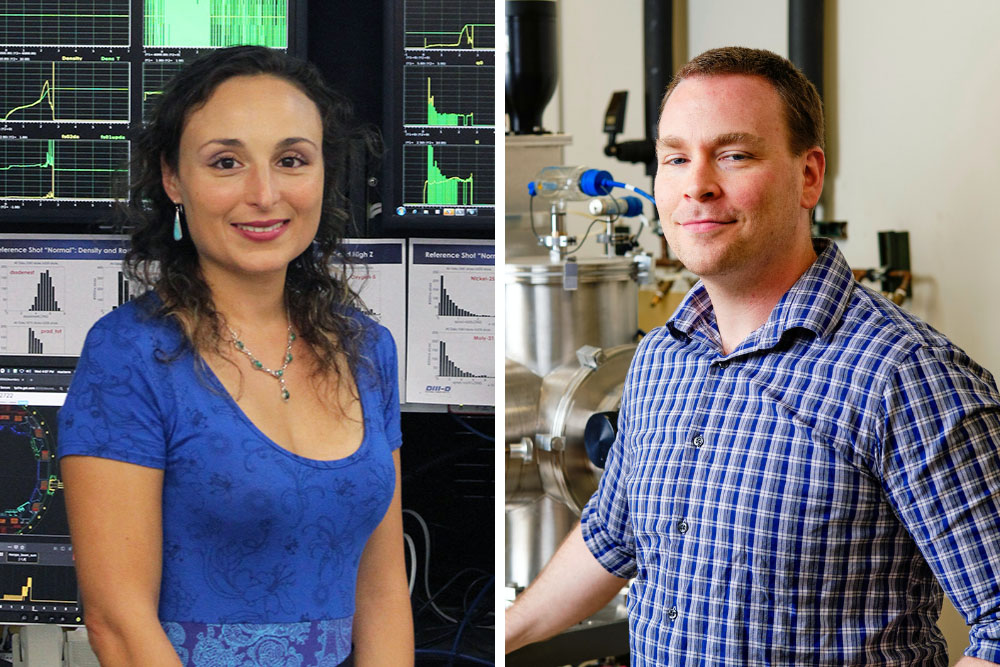Donovan and Casali Explain Science Breakthrough in The Conversation
When the Joint European Torus (JET) experiment in England produced 59 megajoules of energy in February, the world cheered as it indicated research was one step closer to a clean-energy future powered by fusion. Zinkle Fellow and Associate Professor David Donovan and Zinkle Fellow and Assistant Professor Livia Casali recently authored a high-impact news article in The Conversation to explain this advancement and what it means to the field.
Their article “Nuclear fusion hit a milestone thanks to better reactor walls – this engineering advance is building toward reactors of the future” gives an overview of the impact of this experiment that lasted five seconds. The previous fusion record was achieved by JET in 1997 with 22 megajoules of heat energy, and since then the peak power achieved (16MW) has not been surpassed since the research community has been focused on achieved a sustained power output.
Donovan and Casali explain that the results not only advance the understanding of fusion physics, but also demonstrate that the inner walls of the fusion reactor are built to withstand the intense conditions created by fusion with new materials that are working as intended.
“The fact that the new wall construction performed as well as it did is what separates these results from previous milestones and elevates magnetic fusion from a dream toward a reality,” they said.
During the fusion process, wayward fuel particles end up colliding with the inner wall of the fusion vessel, which degrades the walls and contaminates the fuel. To account for this, fusion reactors are built to channel particles toward a chamber called the divertor, which serves to remove excess heat and protect the reactor. The divertor walls of past reactors were made of materials that were simply not up to the task of sustaining particle bombardment for more than a few seconds.
While JET is currently the most advanced magnetic fusion reactor in operation, the next-generation reactor is ITER, currently under construction in France. It will be operational by 2027 and utilizes many of the advances discovered at JET.
It may be the energy production from JET’s experiment that generated international excitement, but Donovan and Casali argue that it’s the new wall materials that offer a proof of concept for ITER. This is exciting to the nuclear fusion field because it indicates that the science and engineering is on track.
